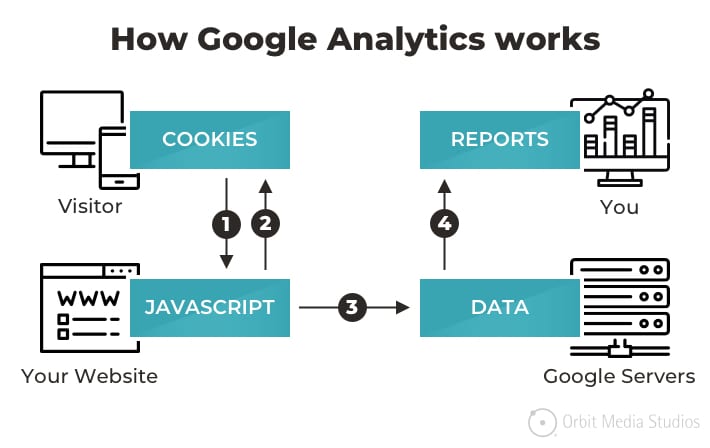Understanding the Art of Utilizing Data With Advanced Google Analytics Methods
The crucial lies in mastering the art of using data with advanced techniques that go past surface-level analysis. What genuinely sets apart the specialists in this field is their ability to perfectly integrate Google Tag Manager into the mix, enabling boosted monitoring capacities that redefine the boundaries of information application in the electronic landscape.
Understanding Complicated Google Analytics Reports

One essential element of understanding complicated Google Analytics reports is identifying and analyzing key performance signs (KPIs) KPIs are specific metrics that line up with the objectives of a company or internet site. By concentrating on appropriate KPIs, such as conversion prices, bounce rates, and typical session period, analysts can gain a much deeper understanding of how users communicate with the website and where improvements can be made.
Moreover, delving into division within Google Analytics reports permits a much more granular analysis of information. By segmenting data based upon different aspects such as demographics, web traffic resources, or user behavior, analysts can discover patterns and patterns that might not be obvious when taking a look at the information all at once. This thorough analysis can provide important insights for optimizing advertising approaches, improving customer experience, and inevitably accomplishing service purposes.
Leveraging Custom Dimensions and Metrics
Discovering the usage of customized measurements and metrics can substantially boost the deepness of evaluation in Google Analytics. Personalized dimensions enable for the production of additional data indicate segment and evaluate details past the default dimensions provided by Google Analytics. By specifying custom-made dimensions, such as user attributes or session information particular to your website, you can get useful insights into user actions and interactions.
On the various other hand, custom-made metrics allow the tracking of distinct data points that are not covered by the standard metrics in Google Analytics. This customization equips you to tailor your analytics to suit your business objectives better. By including custom metrics like scroll deepness, video clip involvement, or particular occasion communications, you can determine and review performance metrics that are important to your internet site's success.
Carrying Out Advanced Data Division Strategies
Utilizing advanced data division methods boosts the precision of analysis in Google Analytics, enabling targeted understandings into individual behavior and efficiency metrics. By segmenting information successfully, marketing experts can identify details individual groups based upon numerous criteria such as demographics, behavior, or procurement channels. This segmentation enables a much deeper understanding of how various sectors interact with an internet site or app, leading to more educated decision-making processes.
Advanced data division methods in Google Analytics surpass basic segmentation by including custom measurements, metrics, and advanced filtering system choices. Marketers can develop segments based on a combination of criteria, enabling extremely specific and tailored analysis. For instance, segmenting individuals who have made an acquisition and went to a particular page can give understandings into the performance of advertising projects in driving conversions.
Additionally, progressed segments can be used to various records within Google Analytics, providing a comprehensive sight of segmented information across numerous measurements (when does the tracking code send an event hit to google analytics?). This alternative method to information segmentation empowers online marketers to reveal covert patterns, determine possibilities for optimization, moved here and inevitably improve the general efficiency useful reference of their electronic homes
Utilizing Information Visualization Tools Properly
Reliable use of information visualization devices is important for transforming complicated data sets into actionable insights for educated decision-making in electronic analytics. Information visualization tools, such as Google Data Workshop, Tableau, or Power BI, play a critical duty in streamlining the analysis of vast quantities of data. By visually standing for information through charts, graphs, and interactive control panels, these tools allow experts to recognize patterns, trends, and relationships that might not be obvious in raw information.

Understanding Google Tag Manager for Boosted Tracking
Optimizing the possibility of Google Tag Manager is important for optimizing monitoring capabilities and boosting information collection accuracy in digital analytics (when does the tracking code send an event hit to google analytics?). Google Tag Manager (GTM) acts as a powerful tool that streamlines the process of handling tags, sets off, and variables on a website without needing manual code modifications. By grasping GTM, electronic marketers can efficiently carry out and upgrade various tracking codes, such as Google Analytics, Facebook Pixel, or customized event tracking, to gather valuable data on individual habits and communications
With GTM's user-friendly user interface, specialists can set up triggers to track details customer actions, like kind entries or switch clicks, and specify variables to capture appropriate information points, such as individual IDs or web page Links. By understanding Google Tag Supervisor, businesses can improve their monitoring capabilities, boost data precision, and inevitably make more enlightened decisions based on reputable analytics insights.
Conclusion
In conclusion, understanding innovative Google Analytics methods is vital for organizations to properly utilize information for decision-making. By comprehending complicated reports, leveraging personalized dimensions and metrics, applying sophisticated segmentation methods, and using information visualization tools, companies can gain beneficial insights right into individual behavior and boost their online efficiency. In addition, grasping Google Tag Manager permits for enhanced monitoring and personalization of information collection. Overall, these strategies encourage companies to make informed choices and maximize their on the internet existence.
By segmenting information based on numerous aspects such as demographics, website traffic sources, or customer actions, analysts can uncover patterns and patterns that might not be apparent when looking at the information as a whole.Efficient usage of information visualization devices is crucial for transforming complicated information sets right into workable insights for educated decision-making in digital analytics. Data visualization devices, such as Google Data Studio, Tableau, or Power BI, play a critical duty in simplifying the interpretation of huge amounts of information.When utilizing data visualization tools, it is crucial to choose the most ideal visualization type based on the nature you could try these out of the information and the understandings being sought - when does the tracking code send an event hit to google analytics?. By grasping the art of making use of data visualization devices successfully, analysts can open the complete potential of their information to drive strategic decision-making and achieve service objectives